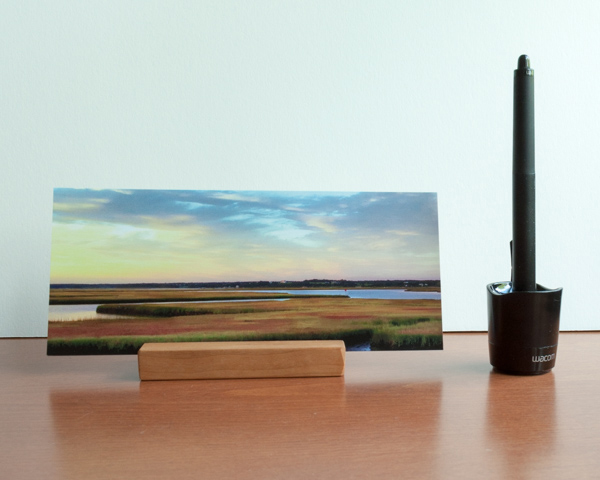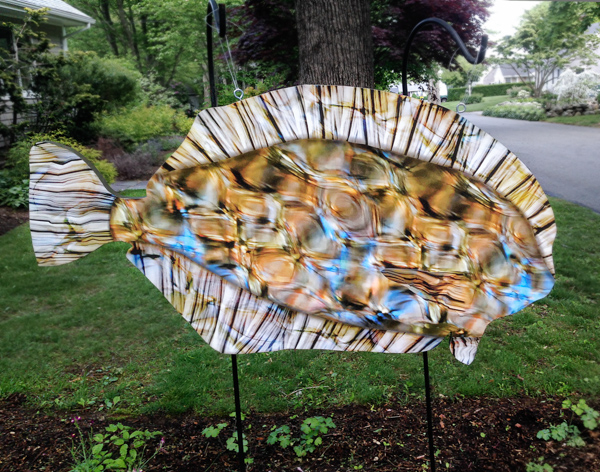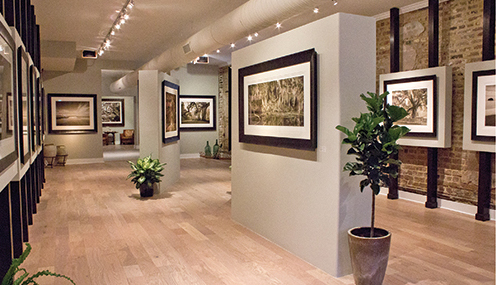Moving to the East Side of Providence has wonderful perks. But like everything else in life there are trade-offs. For avid gardner Sally Shwartz it was a challenging one. Her previous home had a water view that was a vital element in her garden design. Now, instead of an ever-changing palette of sky-colored moving water, her backyard ended with a poorly maintained peeling brick wall belonging to her neighbor. My 3 inch by 10 inch image of the Slocum River became the source for her daily dose of "blue." Wistfully she moved the little panel from the top of her computer to all the windows looking out on her garden.
Out of the blue -- no pun intended -- the solution suddenly became obvious: she needed an image measured in feet not inches, and one that really lived outside. Like me, Sally likes to think outside the box, and when I proposed the idea of creating a large-scale fine art image using billboard technology she jumped on board. Having printed several of my Art Drive fish on weather tolerant material I was confident that we could get the color and quality needed. After a lot of careful planning, measuring and tweaking the blue tones, “River View” was installed. The three panels span 9 feet and they have transformed this Providence backyard. As the light changes throughout the day, the image changes with it - sometimes reflecting real clouds from above or the green light of new leaves moving in the wind. At 9:30 on a cloudy evening, ambient city light makes the river glow as if the moon is shining on it….
I look forward to photographing it in each season.
The last panel goes up.
View from the deck.
No more ugly brick wall from the kitchen window.




























